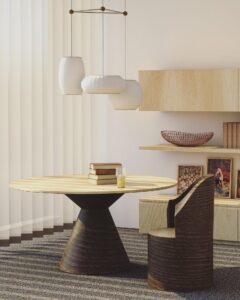When selling a home, it’s important to know what stays with the house, as well as what you may take. Many improvements, accessories, and fixtures convey with the home. It’s important that your agent knows if you plan on taking any of these items when you move. So let’s review what should stay with the house, as well as what to do about fixtures, if they are still under a lease agreement.
Home Improvements that Stay
Fixtures and improvements that are permanently installed and built-in typically convey with the house. The Texas Real Estate Commission’s (TREC) One to Four Family Residential Contract (Resale) states Improvements as:
“….all equipments and appliances, valances, screens, shutters, awnings, wall-to-wall carpeting, mirrors, ceiling fans, attic fans, mail boxes, television antennas, mounts and brackets for televisions and speakers, heating and air-conditioning units, security and fire detection equipment, wiring, plumbing and lighting fixtures, chandeliers, water softener system, kitchen equipment, garage door openers, cleaning equipment, shrubbery, landscaping, outdoor cooking equipment….”
 Some of these items understandably stay with the house. But keep in mind that if you have a heirloom chandelier you want to keep, or that special mirror hanging in the half-bathroom that you just love and plan to take. You need to tell your agent this information, before the home goes on the market. Go through your home, room by room, and write down any items you plan on taking. Do this before going on the market, so there aren’t any surprises later!
Some of these items understandably stay with the house. But keep in mind that if you have a heirloom chandelier you want to keep, or that special mirror hanging in the half-bathroom that you just love and plan to take. You need to tell your agent this information, before the home goes on the market. Go through your home, room by room, and write down any items you plan on taking. Do this before going on the market, so there aren’t any surprises later!
Accessories that Stay with the House
Accessories that stay with the house, as stated in the TREC One to Four Family Residential Contract (Resale):
“….window air conditioning units, stove, fireplace screens, curtains and rods, blinds, window shades, draperies and rods, door keys, mailbox keys, above ground pool, swimming pool equipment and maintenance accessories, artificial fireplace logs, security systems that are not fixtures and controls for: (i) garage doors, (ii) entry gates, and (iii) other improvements and accessories. Controls includes Seller’s transferable rights to the (i) software and applications used to access and control improvements or accessories, and (ii) hardware used solely to control improvements or accessories.”
The item that surprises most sellers are the curtains/draperies. You may have curtains that match your child’s bedsheets, and you plan on taking the curtains. You probably didn’t think about it, but this is important for your agent to know. Notify your agent of your intention to take the curtains. You may also just remove them before any photos and showings occur. If you plan on taking any items that should stay with the house, notify your agent so he/she may write the item(s) on the purchase contract as exclusions.
Fixtures
Texas A&M Real Estate Research Center states, “A fixture is an improvement to real property, generally some type of personal property, that is affixed or fastened in some way that makes it become a permanent part of the real property.”
If you’re unsure if an item is a fixture, a good rule of thumb is this. If removal of the item will damage the property, then it is probably a fixture and needs to convey with the house. A built-in bookcase, built for a specific wall, with boards nailed into the wall studs, should stay. A free standing refrigerator, that you may unplug from an outlet, may go. But a sub-zero refrigerator, customized and built into kitchen cabinetry, needs to stay.
If you’re not sure about a particular item, consult with your agent. By the way, in Texas, a free standing refrigerator, washing machine, and dryer do not have to convey with the property.
Fixture Leases
 If there are any fixtures on the property subject to a lease, notify your agent before going on the market. Many times, sellers forget about these leases. It’s extremely important to find the copy of your lease and have it handy before going on the market. The buyer will need to receive a copy before or at the time of going under contract. Examples of fixture leases are for: a security system, water softener, solar panels, and/or propane tank.
If there are any fixtures on the property subject to a lease, notify your agent before going on the market. Many times, sellers forget about these leases. It’s extremely important to find the copy of your lease and have it handy before going on the market. The buyer will need to receive a copy before or at the time of going under contract. Examples of fixture leases are for: a security system, water softener, solar panels, and/or propane tank.
Review the terms of your fixture lease. Can you assign the lease to the buyer? Do you have to pay off the remainder of money owed? Do you need to move the fixture to your new property? This can be quite the undertaking if its something like solar panels! You need to know what your options are.
Your agent can show you TREC’s Addendum Regarding Fixture Leases, a form used with contracts when selling a property with a fixture lease. There are many boxes that need to be checked. Keep in mind that you, the seller, don’t yet own the leased fixture and what happens to it is mainly determined by the fixture lease.
Knowing what stays with the house and what can go, can sometimes be complicated. Contact us at Baker Realty today to sell your home. We are real estate experts who can navigate sellers through complicated transactions.

